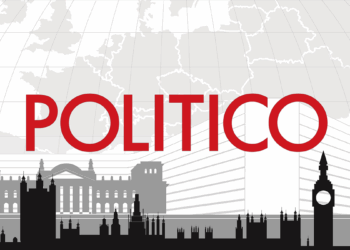President Trump calls them “signing bonuses” and they have emerged as the most effective way for wealthy trade partners to complete deals with the world’s largest economy.
It started when Japan declared it would establish a $550 billion fund for investments in the United States. Following suit, the European Union indicated its companies were poised to invest at least $600 billion. On Wednesday, South Korea pledged to create a $350 billion investment fund.
But now, a little over a week after the Japan deal was announced, significant discrepancies have emerged between how the United States and its trade partners are interpreting the spending commitments, underscoring the tenuousness of these flashy pledges.
For Japan, its commitment to establish a fund for U.S. investment proved a pivotal factor in securing a more favorable, lower-than-threatened tariff rate of 15 percent. Nevertheless, from the deal’s announcement last week, Japanese and American officials appeared to hold diverging views on the specifics of the investment plan.
In revealing the U.S.-Japan agreement in a social media post, Mr. Trump said that in exchange for the reduced tariff, Japan would funnel $550 billion, at his direction, into the United States, with America expected to receive 90 percent of the profits.
Ryosei Akazawa, Japan’s chief trade negotiator, conveyed a different message back to Tokyo: Japan would offer a blend of investment, loans and loan guarantees, totaling up to $550 billion, with profits to be allocated based on each side’s committed risk and financial contribution.
The scarcity of detail, and the absence of a publicly disclosed written joint agreement, prompted trade experts to question the substance of the investment proclamation.
Brad Setser, a senior fellow at the Council on Foreign Relations who was a former trade adviser under the Biden administration, likened it to “vaporware.” Given the investments Japan most likely already had in its sights “there is a lot less here than meets the eye,” he said.
Just days after the Japan deal, the European Union reached an accord with the United States that also included substantial spending pledges. On Sunday, it committed to what a White House statement termed “investments of $600 billion in the United States, all by 2028.”
The European Union’s statement vaguely referenced “expressed interest” from European companies in such investments. It also noted that E.U. officials would not be directing or enforcing how companies spent.
The latest deal to materialize, with South Korea, appeared to place it in a similar predicament to Japan. South Korean officials had looked to the Japan agreement as a blueprint for its own trade negotiations.
In return for a 15 percent across-the-board tariff, South Korea offered to invest $350 billion in the United States. U.S. officials, echoing what they had said about Japan, claimed that 90 percent of the profits from South Korea’s investment would “go to the American people.”
Kim Yong-beom, South Korea’s presidential chief of staff for policy, said in a briefing in Seoul on Thursday that its investment fund would facilitate partnerships between South Korean companies and the United States in industries including semiconductors and shipbuilding.
A large majority of the $350 billion would take the form of loans and loan guarantees, Mr. Kim said, adding that there was confusion over what U.S. officials meant when they said 90 percent of the profits from the investments would go to the American people. South Korea interpreted it as indicating that the profits would be “reinvested” in the United States, he said.
Mr. Kim pointedly questioned how the United States could keep 90 percent of the profits when the money came from South Korea, calling the idea “hard to understand in a civilized country.”
In Japan, the trade deal was initially met with relief, largely because of Mr. Trump’s concession to lower tariffs, particularly on its key auto industry. But reactions have soured to an extent since over the Trump administration’s statements about Japan’s investment commitments.
Shortly after the deal’s announcement, the U.S. commerce secretary, Howard Lutnick, said in a Bloomberg TV interview that Japan would be “the banker” of various investments. He said Japan’s investments would not exclusively fund projects involving Japanese companies. Instead, Japan would provide resources when the United States wanted to fund projects it deemed strategically important.
Masahiko Hosokawa, a former senior official at Japan’s trade ministry, deemed the investment scheme, as outlined by the commerce secretary, “humiliating.” Takahide Kiuchi, the executive economist at the Nomura Research Institute, characterized it as “completely unacceptable for Japan.”
A spokeswoman for the U.S. Commerce Department did not immediately respond to a request for comment.
Japanese officials have been scrambling to define and explain their positions. Mr. Akazawa, Japan’s top trade negotiator, told the country’s public broadcaster over the weekend that he anticipated only 1 or 2 percent of the $550 billion fund would be deployed as direct investment, with loans constituting the bulk of the remainder.
During Mr. Trump’s first term, Japan and other major trade partners had learned that brandishing big dollar figures could be a tactic in negotiating with the president.
When Shinzo Abe, the Japanese prime minister who was assassinated in 2022, met with Mr. Trump in 2017, he pitched a $450 billion infrastructure plan that would include investments in the U.S. energy industry and create 700,000 jobs in the United States over 10 years. Follow-through, at the time, was seen as less critical.
This time, Scott Bessent, the U.S. treasury secretary, warned last week that the United States would monitor how its trade agreement with Japan would be carried out. It would raise its tariff rate if the president wasn’t satisfied, he said.
River Akira Davis covers Japan for The Times, including its economy and businesses, and is based in Tokyo.
Choe Sang-Hun is the lead reporter for The Times in Seoul, covering South and North Korea.
The post Murky Pledges of Investment Cast Shadow on Trump’s Trade Deals appeared first on New York Times.




